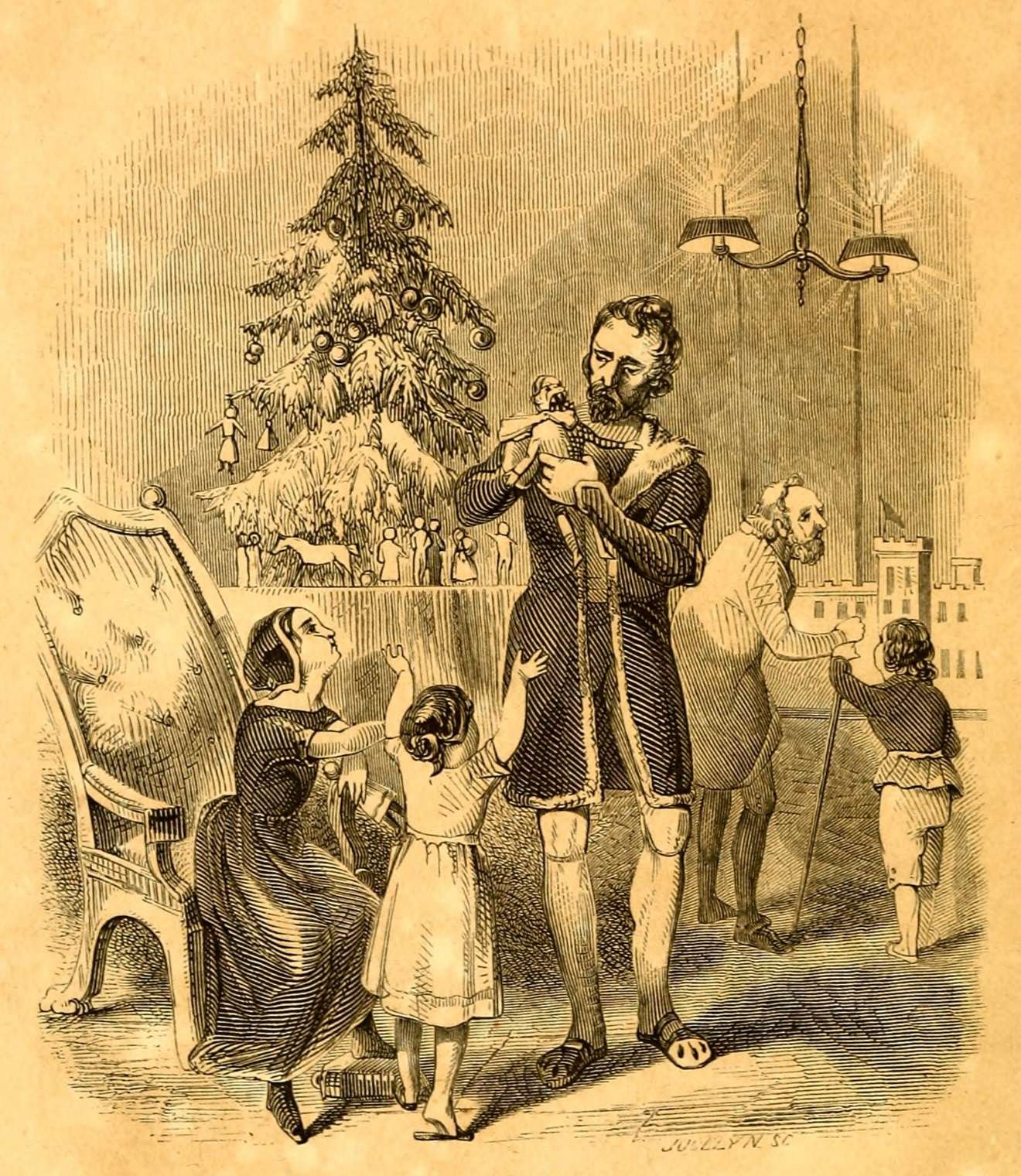In the early 19th Century Christmas was not celebrated in English-speaking countries like it is today. The U.S., Canada, and England, with their long Puritan background, looked down on pleasurable festivities of a religious holiday.
Writers changed the cultural acceptance of celebrating the goodness and magic that is the true meaning of Christmas. Early 19th Century Christmas festivity was promoted by Jane Austen, E.T.A. Hoffmann, Clement Clarke Moore, Washington Irving, Douglas Jerrod, the Brothers Grimm, Hans Christian Anderson, Charles Dickens, and others.
A Christmas Carol

The most loved and influential Christmas tale of all time. Everyone loves Ebenezer Scrooge, Bob Cratchet, Tiny Tim, and the Ghosts of Christmas Past, Present, and Future.
A Christmas Carol written by British writer Charles Dickens (1812-1870) in 1843. This story established Christmas traditions of family gatherings, seasonal food and drink, dancing, games, and charity giving.
The story is about cranky miser Ebenezer Scrooge who hates Christmas. He is visited by Christmas spirits offering a chance to save his soul from damnation. He is transformed and becomes a kind and charitable man.
Twas The Night Before Christmas

The traditional Christmas rhymed poem everybody learns from childhood. It helped to establish Christmas traditions and the modern character Santa Claus with his reindeer. Written by Clement Clarke Moore (1779-1863) and published in 1823.
Old Christmas

The Washington Irving (1783-1859) Christmas tales had a major influence on Dickens and other writers. Four Christmas tales are in his Sketch Book of Geoffrey Crayon, 1819, “Old Christmas”, “Christmas Eve”, “Christmas Day”, and “Christmas Dinner”, set in Yorkshire, England.
The Gift of the Magi

A popular bitter sweet short story by O. Henry (William Porter 1862-1910). About a poor young couple who make sacrifices to be able to buy each other Christmas gifts. He sells his watch to buy her a jeweled comb for her long hair. She sells her hair to buy him a platinum chain for his watch.
The Little Match Girl

A tender story of a poor young girl who tries to sell matches during the Christmas season and finds hope amid despair. Published in Anderson’s Fairy Tales, 1845 by Danish writer Hans Christian Anderson (1805-1875)
How the Grinch Stole Christmas

The ever popular children’s illustrated rhymed verse by Dr. Seuss (Theodor Geisal 1904-1991) in 1957. The cranky Grinch tries to stop Christmas in Whoville on Christmas Eve by stealing the gifts. He learns that it is goodness that is important, not the gifts.
A Country Christmas

Louisa May Alcott (1832-1888), author of Little Women, wrote a compilation of 15 Christmas stories. The popular “A Country Christmas” is about two young city girls Sophie and Emily who experience an old fashioned Christmas in rural Vermont.
The Elves and the Shoemaker

The Brothers Grimm, Jacob (1785-1863) and Wilhelm (1786-1855) published Grimm’s Fairy Tales in 1812. Among the tales was “The Elves and the Shoemaker” about a poor shoemaker who receives much needed help from three elves.
The Life and Adventures of Santa Claus

The American children’s book author L. Frank Baum (1856-1919), who wrote The Wizard of Oz, also wrote a wonderful Christmas story. In 1902 he published the illustrated book The Life and Adventures of Santa Claus. It details how the jolly old spirit became the legend of the North Pole making toys with his team of elves and pixies.
The Nutcracker and the Mouse King

German writer E.T.A. Hoffmann (1776-1872) wrote The Nutcracker and the Mouse King in 1816. It was later adapted by Pyotr Ilich Tchaikovsky into a popular Christmas ballet.
On Christmas Eve, a 7 year-old girl receives a toy nutcracker that comes alive. After defeating the Mouse King in battle, the Nutcracker whisks her away to a magical kingdom.



